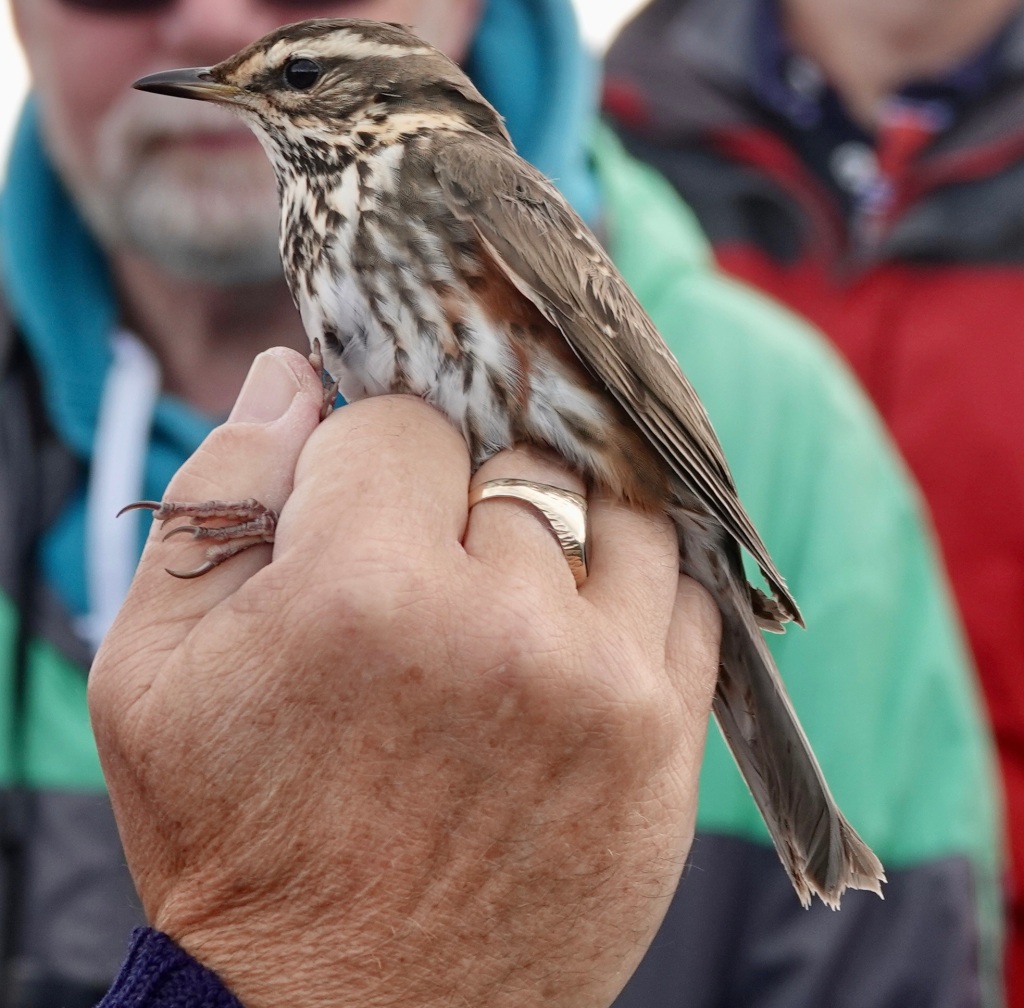Late winter is the best time of year to see these handsome thrushes as cold weather will tempt them into gardens. The first birds arrive from their northern breeding grounds during October, occasionally in late September. Many overwinter here, especially if there is a spell of cold weather. They can also be heard as they migrate south, often during the night, with a high pitched ‘sri’ as flocks of 40 – 50 or more fly overhead. The last birds leave us in March, with very occasional sightings in April.
Ringing recoveries show that many Redwing seen here travel further south to France, Spain and particularly Portugal – indicating a migration route long the coast of Western Europe.
They will be tempted down by bright red hawthorn berries, crab apples and cotoneaster. Apples are a firm favourite and they will feast on windfalls as the rotting fruit is soft and easy to digest. They also eat invetebrates but, like Blackcap change their diet during colder months when insects are largely absent.
I find they can be quite flighty and readily disturbed so was pleased to get some of these shots one afternoon in a local orchard where I was able to use my car as a hide. I had to leave the car as my camera was in the boot (typical!) but once back inside I was patient and the Redwing obliged by returning. The Fieldfare all disappeared off down to the far end and couldn’t be seen through the branches.

Slightly smaller than its near relative, the Song Thrush, a Redwing is most immediately identified by its long, pale buff eyestripe which extends back to its neck. Its breast is pale streaked with dark brown, the flank and underwing coverts are a rich rufous brown which give it its name.

The photo above was taken at a Nature Guernsey event, put on by La Société Guernesiaise, when I had my first close-up view of this handsome thrush. Trevor Bourgaize, who handled it, also showed the pointe tail feathers which show it was a juvenile – not yet moulted and showin signs of wear. This opened my eyes to bird ringing: being able to see the birds at close quarters and to contribute data to help understand numbers and movements of different species.
